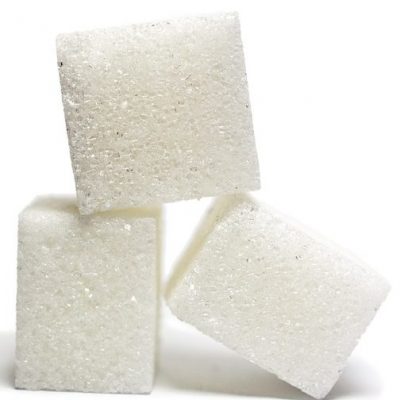In the 1980’s and 1990’s we were all told to eat low fat because the fat in our foods was leading to obesity. It turns out that this may have been one of the greatest public health mistakes in the modern error. Food companies jumped on the low fat bandwagon with fervor and quickly churned out tons of low fat products. Unfortunately, the fat in these products were replaced with sugars, artificial sweeteners and simple carbohydrates. When fat is removed from food, the food tastes bland. Therefore, companies add in “natural and artificial flavors” as well as sugars to improve the taste profile The inclusion of artificial flavors, natural flavors, sugars, and sugar substitutes into our foods can be harmful to our health and well being.
Research has shown that it is not the fat consumption in our diets that leads to obesity, metabolic syndrome, impaired cholesterol levels, diabetes and heart disease, but the simple SUGARs. It turns out that when we consume too much sugar, it is converted into fat and stored by the body. In addition, sugar consumption drives hunger and further sugar consumption. This is a negative cycle that is very difficult to break. This is because sugar consumption actually stimulates the centers in the brain that are activated in drug addiction and drug seeking behaviors.
We are all brainwashed into thinking we should be eating low fat, but current research shows this is absolutely incorrect. It is still prudent to keep the amount of fat we are eating to a reasonable amount, but more important then the amount of fat, is the type of fat we are eating.
Just the other day, I overheard a conversation on regarding which candies were the best choices if you were going to “cheat” during Halloween. I heard, “eat a ‘Milky Way ®’ or a ‘Peppermint Patty ®’ because they have very little or no fat.” While it is true that these candies are relatively low in fat, they are both very high in sugar. By eating simple sugar without fat, all you are doing is driving your hunger cravings. Most of us remember the quote, “Snickers really satisfies you ®”. In some sense, this is a true statement. That is because Snickers contain actual peanuts. To be clear, I am not promoting eating Snickers, but just stating that the peanuts in the Snickers bar will provide protein and fat and offset some of the rapid blood sugar rise seen with other candy bars.
It appears that the fruit in sugars is not actually that good for us either. Fruits contain fructose, and excess fructose is turned into fat by our livers. In addition, too much fructose in our diets appears to be the driving force for metabolic syndrome (abdominal obesity, insulin resistance, impaired lipids, cardiac disease, etc). So, does that mean we should avoid fruit in our diet? NO. When eaten whole, rather then juiced, fruit provides us with many important nutrients, fibers and even fats (think avocado). Fruit consumed whole is digested by our bodies as a “whole package”. We are able to extract out important nutrients and utilize them appropriately. On the other hand, fruit juice, is processed by our body the much same way as simple sugars found in candy. If you are making smoothies or juice drinks it is important to use the whole fruit instead of just the liquid.
Complex carbohydrates are handled differently by our bodies because it takes more time for these molecules to be broken down. Therefore, the sugar rise after eating a complex carbohydrate is slower and more consistent.
Getting back to the idea of low fat, it appears currently the best thing you can do for yourself is to allow yourself to eat good fats. In addition, to help with satiety (the feeling of fullness), fat is required for numerous functions in our bodies.
Why do we need to eat fat?
- Fat serves an important energy source
- Certain ‘essential fatty acids” cannot be made by our bodies and need to be consumed as part of our diets
- Nerve cells are coated by fat as an insulation for proper electrical signaling in the brain and nervous system
- All of our cell membranes have fatty acids in them – the type of fatty acids in the cell membrane determine the flexibility of our cell walls
- Fat is required for proper immune function
As was mentioned in a previous article, fat can be broken down into several categories; Monounsaturated fatty acids (MUFA), Polyunsaturated (PUFA) and Saturated fatty acids (SFA). We actually need a combination of all three types of fat in our diets. It appears that monounsaturated fats such as those found in olive oil, nuts, seeds, and dark chocolate help our heart health and protect against chronic disease and inflammation. Certain polyunsaturated fatty acids are also beneficial, particularly, those foods that contain Omega-3 Fatty acids. This type of fat is found in salmon, chia seeds, walnut, flaxseeds, enriched egg yokes, natto (fermented soy) and cod liver oil.
The jury is still out with regard to saturated fatty acids. It remains true that trans-fats, such as those found in margarines, vegetable shortening and partially hydrogenated vegetable oils, are still associated with significant health problems. However, certain saturated fatty acids, such as those obtained from grass fed meats, grass fed butters appear beneficial. In a review article published in the Annals of Internal Medicine in March 2014 by Rajiv Chowdhury et al,, no link was identified between saturated fat and heart disease.
So, based on the most current research, it seems most prudent to significantly restrict your simple sugar intake, (including fructose and artificial sweeteners) and stick to whole, non-processed full fat foods.

